Search results for "ulla-lena lundberg"
Favourites in April: what Finland read
8 May 2013 | In the news
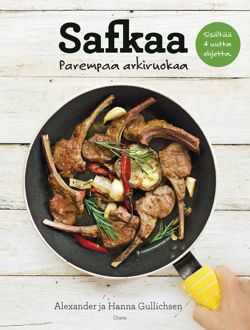 In April number one on the list of best-selling Finnish fiction titles, compiled by the Finnish Booksellers’ Association, was Seppo Jokinen’s crime novel Vihan sukua (‘Akin to hate’, Crime Time). The winner of the 2012 Finlandia Prize for Fiction, Ulla-Lena Lundberg’s Is (‘Ice’), still holds second place.
In April number one on the list of best-selling Finnish fiction titles, compiled by the Finnish Booksellers’ Association, was Seppo Jokinen’s crime novel Vihan sukua (‘Akin to hate’, Crime Time). The winner of the 2012 Finlandia Prize for Fiction, Ulla-Lena Lundberg’s Is (‘Ice’), still holds second place.
Pertti Jarla seems to have secured his place on the best-seller list: his latest serial comics book about the inhabitants of the city of Fingerpori (‘Fingerborg’, Arktinen Banaani), Lääkärileikit (‘Playing doctors’) was number three and the album Fingerpori 6 number four.
Paulo Coelho ruled the translated fiction list with his Manuscript Found In Accra. There are more people who find his books fascinating than there are people who don’t.
At the top of the non-fiction list remained, for the third time now, Kaiken käsikirja (‘Handbook of everything’, Ursa) by astronomer and popular writer Esko Valtaoja; as it doesn’t provide the reader with instructions for cooking, perhaps buyers went on to buy number two, Safkaa: parempaa arkiruokaa (‘Grub: better food for weekdays’, Otava) by Alexander and Hanna Gullichsen. Last year’s big social-media hit hails from this book: avocado pasta (chili, lime, basil, garlic, spaghetti, parmesan).
Safka, incidentally, comes from the Russian word zavtrak, breakfast. (The title of the book could also have been Sapuskaa…, the word also means ‘grub’, from the Russian word zakuska, hors d’oeuvres.)
Northern prizes
31 October 2013 | In the news
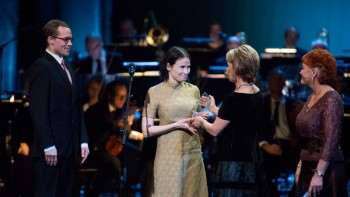
The winners: Seita Vuorela and Jani Ikonen are presented with their prize. Photo: Magnus Froderberg/Nordic Council
The Nordic Council’s five culture prizes were for the first time awarded together at a Gala at the Oslo Opera House on 30 October. The show was broadcast by all the Nordic public service channels.
The winners of the Nordic Council Children and Young People’s Literature Prize 2013 – worth about €43,000 – are Seita Vuorela and Jani Ikonen from Finland. Karikko (‘The reef’, see our review) written by Vuorela and illustrated by Ikonen is the first work to be awarded the newly established Nordic Council Children and Young People’s Literature Prize.
Another Finnish winner this time was the violinist Pekka Kuusisto (born 1976) who won the Nordic Council Music Prize (also worth €43,000). ‘Pekka Kuusisto is a violinist in the absolute elite and with as much unique creativity as musicality,’ said the Adjudication Committee.
The 2013 Nordic Council Literature Prize went to a Danish-Norwegian author Kim Leine. The Finnish nominees were Rosa Liksom and Ulla-Lena Lundberg.
The oldest of the five prizes is the Literature Prize, first awarded in 1962. It was followed by the Music Prize (1965), the Nature and Environment Prize (1995), the Film Prize (2002) and the Children and Young People’s Literature Prize (2013).
Finlandia Prize for Fiction candidates 2012
23 November 2012 | In the news
The candidates for the Finlandia Prize for Fiction 2012 were announced on 15 November. They are Riikka Ala-Harja, Pirjo Hassinen, Heidi Köngäs, Ulla-Lena Lundberg, Aki Ollikainen and Juha Seppälä.
Their novels, respectively, are Maihinnousu (‘The landing’, Like), Popula (Otava), Dora, Dora (Otava), Is (‘Ice’, Schildts & Söderströms), Nälkävuosi (‘The year of hunger’, Siltala) and Mr. Smith (WSOY).
The jury – researcher Janna Kantola, teacher of Finnish Riitta Kulmanen and film producer Lasse Saarinen – made their choice out of ca. 130 novels. The winner, chosen by Tarja Halonen, who was President of Finland between 2000 and 2012, will be announced on 4 December. The prize, awarded since 1984, is worth 30,000 euros.
The jury’s chair, Janna Kantola, commented: ‘One of this year’s recurrent themes is the Lapland War [of 1944–1945]. Writers appear to be pondering the role of Germany in both the Second World War and in contemporary Europe. Social phenomena are examined using satire; the butt is the birth and activity of extremist political movements. Economics, the gutting of money and market forces, are present, as in previous years, but now increasingly with a sense of social responsibility.’
Popula deals with people involved in a contemporary populist political party. Dora, Dora describes Albert Speer’s journey to Finnish Lapland in 1943. Nälkävuosi depicts the year of hunger in Finland, 1868. Is takes place in the Finnish archipelago of the post-war years. Mr. Smith portrays greed and the destructive power of money both in Russian and Finnish history as well as in contemporary Finland. Maihinnousu, set in Normandy, depicts a child’s serious disease in a family that is going through divorce.
Ulla Jokisalo & Anna Kortelainen
Pins and needles
11 May 2011 | Essays, Non-fiction
In these pictures by Ulla Jokisalo and texts by Anna Kortelainen, truths and mysteries concerning play are entwined with pictures painted with threads and needles. Jokisalo’s exhibition, ‘Leikin varjo / Guises of play’, runs at the Museum of Photography, Helsinki, from 17 August to 25 September.
Words and images from the book Leikin varjo / Guises of play (Aboa Vetus & Ars Nova and Musta Taide, 2011)
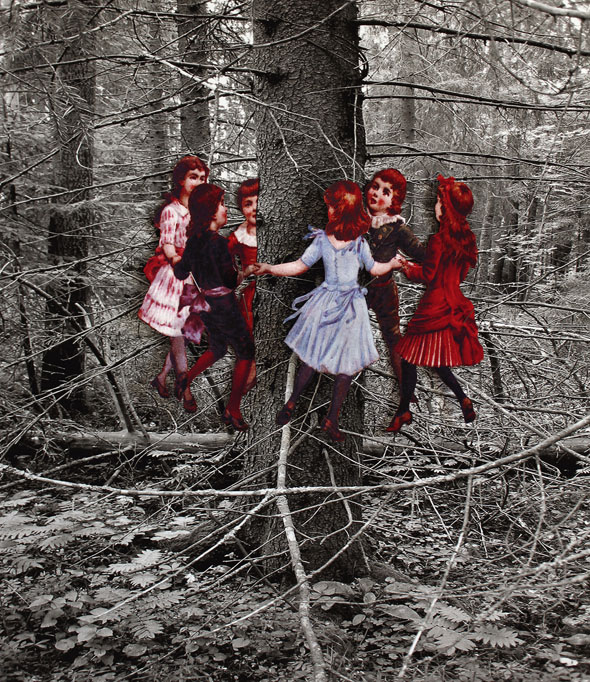
‘Ring dance’ by Ulla Jokisalo (pigment print and pins, 2009)
Helene Schjerfbeck. Och jag målar ändå [Helene Schjerfbeck. And I still paint]
16 December 2011 | Mini reviews, Reviews
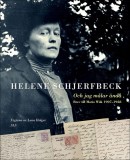 Helene Schjerfbeck. Och jag målar ändå. Brev till Maria Wiik 1907–1928
Helene Schjerfbeck. Och jag målar ändå. Brev till Maria Wiik 1907–1928
[Helene Schjerfbeck. And I still paint. Letters to Maria Wiik 1907–1928]
Utgivna av [Edited by]: Lena Holger
Helsingfors: Svenska Litteratursällskapet i Finland; Stockholm: Bokförlaget Atlantis, 2011. 301 p., ill.
ISBN (Finland) 978-951-583-233-7
ISBN (Sweden) 978-91-7353-524-3
€ 44, hardback
In Finnish:
Helene Schjerfbeck. Silti minä maalaan. Taiteilijan kirjeitä
[Helene Schjerfbeck. And I still paint. Letters from the artist]
Toimittanut [Edited by]: Lena Holger
Suomennos [Translated by]: Laura Jänisniemi
Helsinki: Suomalaisen Kirjallisuuden Seura, 2011. 300 p., ill.
ISBN 978-952-222-305-0
€ 44, hardback
This work contains a half of the collection of some 200 letters (owned by the Signe and Ane Gyllenberg’s foundation), until now unpublished, from artist Helene Schjerfbeck (1862–1946) to her artist friend Maria Wiik (1853–1928), dating from 1907 to 1928. They are selected and commented by the Swedish art historian Lena Holger. Schjerfbeck lived most of her life with her mother in two small towns, Hyvinge (in Finnish, Hyvinge) and Ekenäs (Tammisaari), from 1902 to 1938, mainly poor and often ill. In her youth Schjerfbeck was able to travel in Europe, but after moving to Hyvinge it took her 15 years to visit Helsinki again. In these letters she writes vividly about art and her painting, as well as about her isolated everyday life. Despite often very difficult circumstances, she never gave up her ambitions and high standards. Her brilliant, amazing, extensive series of self-portraits are today among the most sought-after north European paintings; she herself stayed mostly poor all her long life. The book is richly illustrated with Schjerfbeck’s paintings (mainly from the period), drawings and photographs.
Stars above
30 December 1998 | Fiction, Prose
Extracts from the novel Benjamins bok (‘Benjamin’s book’, Schildts, 1997)
There are people who feel they are in contact with the stars. Among those who carry their secret knowledge around with them are both the healthy and the ‘sick’. Now I remember Olli stretching his arm out towards the evening star and seeming to greet it. For others, for me, the starry heavens are a form of distant vertigo. All those milky ways and galaxies, how could they not be inhabited, have developed a culture far older than our own. Perhaps they have watched the development of our planet with distaste, and are waiting for its ruin, which according to their calculation of time will take place in a few years or days from now. If I listen closely I seem to be faintly approached by a celestial choir, composed of indistinct sounds; if I stand on a lonely road in the country, and look up at the sky, the light and faint murmur from a nearby town emerge, and can be separated from the faint voices of the starry heavens. It is probably just my imagination. Perhaps it is an extension of that voice – anonymous, quiet – that I hear when I read a book. A good book is audio-visual. And no harm is done if it gives the reader a mild sense of vertigo. More…
Keeping up with the Joneskis
17 April 2009 | Extracts, Non-fiction
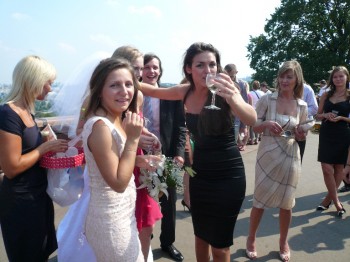
Toasting the bride: cheerful wedding parties drive up to the Sparrow Hills in Moscow in summer
Moscow-based journalist Anna-Lena Laurén finds the new Russia a promised land of materialism – a place where appearances are everything, and how you pay for maintaining them is a matter of strictly secondary interest
‘I want to go to the nightclub by boat! Come on, let’s hire one,’ Ilya says, heading towards the shore where a boat for at least twenty people is moored. There are six of us.
After two minutes of negotiation, he takes up his position alongside the gangway. He welcomes us onboard with a chivalrous gesture. We step onto the boat and are gently taken off down the Moyka canal in the white night of St Petersburg in June. The sky is pale pink and dark blue-lilac, the air damp and cold, but the captain hands out rugs to keep us warm. The ornamented bridges and pastel-coloured façades of St Petersburg glide past in a faint glow, it’s just light enough to make out the colours, powdery pink, vanilla yellow, pale blue. More…
Tchotchkes for the tsar
11 August 2011 | Reviews
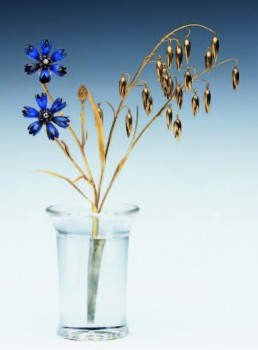
Cornflower and ear of oats: one of the several Fabergé gemstone ornaments now owned by Queen Elizabeth of England (gold, rock crystal, diamonds, enamel, ca 18 cm)
Ulla Tillander-Godenhielm
Fabergén suomalaiset mestarit
[Fabergé’s Finnish masters]
Design: Jukka Aalto/Armadillo Graphics
Helsinki: Tammi, 2011. 271 p., ill.
ISBN 978-951-31-5878-1
€57, hardback
In its online shop, the Hermitage Museum in St Petersburg sells a copy of a most delicate, enchanting little nephrite-and-opal lily of the valley that perfectly imitates nature, sitting in a vase made of rock crystal that looks like a glass of water.
These small flowers made of gold and gemstones were manufactured by the jeweller Fabergé a hundred years ago. The lily of the valley was the most frequently used floral motif in the Fabergé workshops – it was the favourite flower of Empress Alexandra (1872–1918), and the imperial family was the the foremost client of the world’s foremost jeweller.
The replica (13.5 centimetres high) is available at the Hermitage as a ‘luxury gift’ for the price of mere $3,300. (N.B. Since we published this review, the ‘luxury gift’ items seem to have disappeared from the Hermitage online shop selection, so we have removed the link. Several Fabergé egg replicas are available though, ranging in price from $200 upwards – link below.)
For those who feel the price is excessive, there is also a rather modestly-priced little bay tree (original: gold, Siberian nephrite, diamonds, amethysts, pearls, citrines, agates and rubies as well as natural feathers, about 30 centimetres tall, featuring a little bird that emerges flapping its wings and singing when a small key is turned) at just $ 219,95. Despite its form, it is classified as one of the famous imperial Easter eggs. (However, as I write, this item is unfortunately sold out…) More…
All in good time
17 April 2009 | Letter from the Editors
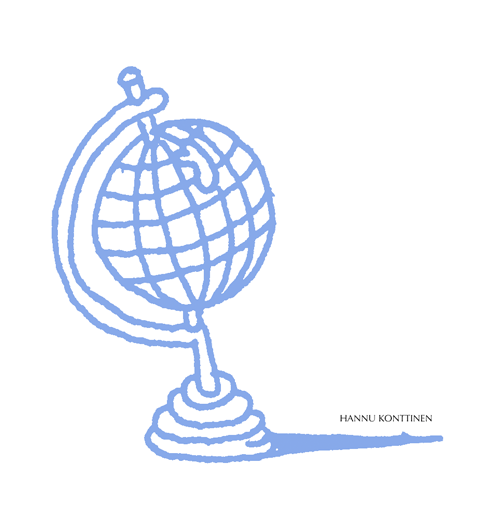 So here it is, Books from Finland’s new website. From the decision to abandon print and go online it’s been a long and sometimes circuitous journey to get here – a journey that has been far longer in the imagining than in the making. More…
So here it is, Books from Finland’s new website. From the decision to abandon print and go online it’s been a long and sometimes circuitous journey to get here – a journey that has been far longer in the imagining than in the making. More…
Green gold, black gold
31 March 2001 | Archives online, Fiction, poetry
Poems from Jakutian aurinko (‘The Yakutian sun’; Tammi, 2000). Introduction by Kari Sallamaa
So this, then, is Tomsk,
a town, tumbling into snow.
Even its lanes rise up into the sky.
No longer fragrant the pine,
the juniper, not even the gardens.
Can’t trust the skirts,
above the rooftops,
stripes are beaten out of the carpet,
yellow and turquoise for the horizon,
under the rooftops, fingernails
rip the wallpaper,
those white frost fingernails.
So, this is Tomsk,
in its streets the Volgas zip by.
And when I get a ride, the back seat fills up in no time.
Breath steams, nylon rips. The ladies
apply lipstick, unconcerned. More…
Slow down!
26 August 2011 | Letter from the Editors
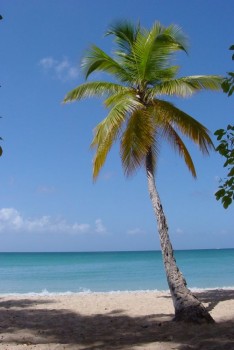
Books for a desert island? Photo: Patrick Verdier (Wikimedia)
Might Tolstoy’s War and Peace be the epitome of a novel that qualifies for reading on a desert island? (Maybe along with Tristram Shandy or Finnegan’s Wake, and possibly The Gateless Gate (the Zen Buddhist kōans). After all, who’s got time or energy for some 1,500 pages of a wartime story from the Napoleonic era with too many characters (580, and so many of them called Pierre)?
We do tend to consume everything quickly: busy busy! We eat fast, we talk fast, we exercise fast, we fast-forward through movies. We devour books like fast food. Hurry hurry! On to the next one, whatever it is, don’t hang about! More…
Nature boy
15 September 2011 | In the news
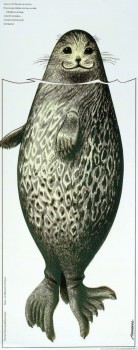
Seal signed: Saimaa ringed seal by Erik Bruun
The graphic artist Professor Erik Bruun has been awarded the Luonnotar / National Spirit of Nature Award for 2011.
The prize, established by the Puu kulttuurissa / Wood in Culture Association in 2001 and now worth € 12,000, is awarded bi-annually to Finnish professionals of any field of culture whose work has helped to make the public in Finland and abroad more aware of Finnish culture, heritage and environment.
Erik Bruun (born 1926) – who was the Art Editor of Books from Finland from 1976 to 1989 – is perhaps best known to the public for his numerous posters and advertisements, in particular his nature posters for the Finnish Association for Nature Conservation: the Saimaa ringed seal, the bear, eagles, owls, seagulls and other birds.
Bruun’s interest in nature photography, drawing, etching and lithography have long combined in his work for the Finnish wood processing industry as well as in his illustrative work for magazines and books and in designing postage stamps and banknotes.
A book on his life’s work, Sulka ja kynä. Erik Bruunin julisteita ja käyttögrafiikkaa (‘The quill and the pen. Posters and graphics by Erik Bruun’) by Ulla Aartomaa was published in 2007 (and reviewed in Books from Finland 3/2007). Take a look at his work on his home page.
Kirjailijoiden Kalevala [The writer’s Kalevala]
7 February 2014 | Mini reviews, Reviews
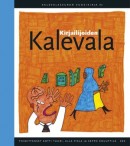 Kirjailijoiden Kalevala
Kirjailijoiden Kalevala
[The writer’s Kalevala]
Toim. [Ed. by]: Antti Tuuri, Ulla Piela ja Seppo Knuuttila
(Kalevalaseuran vuosikirja 92, the Kalevala Society’s yearbook 92)
Helsinki: Suomalaisen Kirjallisuuden Seura, 2013. 313 pp., ill.
ISBN 978-952-222-429-3
€47, hardback
The Kalevala is the Finnish national epic, compiled from oral folk poetry by Elias Lönnrot. It has provided a source of inspiration to Finnish culture since 1839. Kirjailijoiden Kalevala continues a project entitled ‘The artists’ Kalevala’, started in 2009. To start with, four scholars examine, from different viewpoints, the influence of folk poetry and the Kalevala on literature. Some twenty Finnish-language authors then approach the epic with original thoughts and literary means. The result may take the form of reminiscing, of a short story, poem or cartoon. In some texts the Kalevala is present only indirectly, in others some character of the epic is placed in the focus – Väinämöinen, Kullervo, Lemminkäinen or Aino. Kirjailijoiden Kalevala offers a multifaceted collection of viewpoints; aptly, the editors, in their foreword refer to the epic as a literary sampo, the mysterious, mythical object of the Kalevala that generates wealth and riches.
